
In this lesson, students will relate fractions to the rotation of one hand of the clock.
- Subject:
- Mathematics
- Material Type:
- Lesson Plan
- Provider:
- Alabama Learning Exchange
- Author:
- Julie Maynard
- Date Added:
- 02/26/2019

In this lesson, students will relate fractions to the rotation of one hand of the clock.
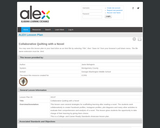
This lesson uses several strategies for scaffolding learning after reading a novel. The students work collaboratively to create Facebook profiles, Instagram profiles, plot diagrams and many other activities to evaluate their comprehension and analysis of a novel. This lesson gives students the opportunity to take charge of their learning by giving them choice.
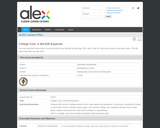
Students will choose a college based on their career goals and aspirations. In this lesson, students will select a career field, choose a field of study (major), and research college cost. Students will learn how to chart, graph, analyze and present the total cost of college in a spreadsheet.

Students will create a travel brochure for either their home town or a city they would love to visit or move to as soon as possible. This activity will help them learn to research and document information in appropriate spaces.
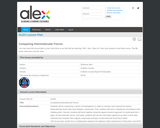
Students will conduct a series of investigations in order to compare and contrast the various intermolecular forces that exist between compounds. First, students will rank 4 substances according to their melting points. Second, students will work together using the jigsaw research approach to understand the 4 types of intermolecular forces. And lastly, students will use the information gained to go back to their data collected and compare their original compounds and type of intermolecular bond they exhibit.
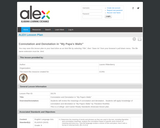
Students will review the meanings of connotation and denotation. Students will apply knowledge of connotation and denotation to "My Papa's Waltz" by Theodore Roethke.
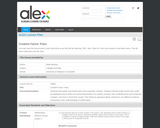
Students will explore and review prime and composite numbers. Students will also build a factor tree model by displaying how to write out a prime factorization of a number correctly, how to identify prime and composite numbers, and how to check their results. This hands-on approach allows students to use different mediums and practice their understanding of mathematics.
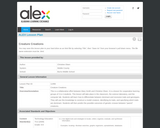
In this lesson, students learn how to differentiate between dominant and recessive traits and genotypes. They will use this knowledge to construct a model creature, identifying its traits, and specifying which traits are dominant. Students will then predict the possible outcomes of genetic crosses between "parent" creatures.
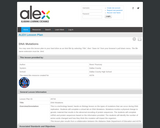
Students will complete a virtual lab on DNA mutations. Mutations involve a physical change to genetic material that results in the abnormal encoding of protein sequences. The students will complete mRNA and protein sequences based on the information provided. The students will identify the number of amino acids changed and how they think this mutation will impact the organism.
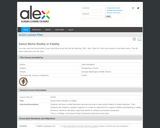
Students will view a reality television episode and read a news article related to reality television. Then students will complete a graphic organizer to create an argument for or against children participating in reality television. Students will apply supportive details for writing a persuasive paragraph.

In this lesson, the students will use base ten blocks to build and compare decimal numbers.
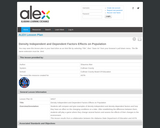
Students will compare and give examples of density-independent and density-dependent factors and how they have an effect on the changing conditions on a lake. After establishing the difference between them, students will play a game where they change several factors and assess the effects of their changes to the environment.

Students will use literary elements to show similarities and differences of today's society to the past. Using the book, Belle Prater's Boy by Ruth White students will be able to compare and contrast the characters Gypsies and Woodrows dilemmas in life to situations taking place in the home, society, and school today.
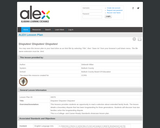
This lesson provides students an opportunity to read a selection about extended family feuds. It details a boundary dispute that has been longstanding for three generations. Students will discover how two families solve this longstanding dispute.
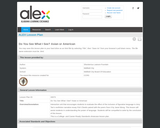
This interactive unit encourages students to evaluate the effect of the inclusion of figurative langauge in Amy Tan's nonfiction narrative essay Fish Cheeks paired with the poem Face It by Janet Wong. This lesson will assist students in understanding the power of language. Students will be compelled to write by the conclusion of this lesson.
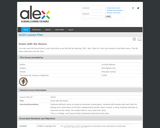
Students will learn nouns by an interactive sorting game. Students will compete with each other by putting noun cards down on the floor by catergorizing them by person, place, animal, or thing. Students will have to read and sort the cards. The student with no noun cards first, wins!
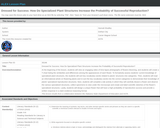
Students will view an engaging video of time-lapse photographs of flowers blooming, and students will create a T-chart listing the similarities and differences among the appearances of each flower. To formatively assess students' current knowledge of specialized plant structures, the students will sort key vocabulary words related to plants' structures into categories. Then, students will read an informational article on flowering plants and re-sort the key vocabulary words into the correct categories to demonstrate their knowledge of plants' specialized reproductive structures. Next, students will complete a lab activity in which they will carefully dissect a flower and observe the various specialized structures, collect specimens to view under the microscope and create and label scientific sketches of the flower's specialized structures. Lastly, students will design a unique flower that will have a high probability of reproductive success and provide a written response in a claim-evidence-reasoning format.
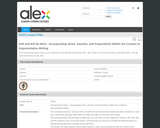
Students will be taught the "drill skill and kill" method to be used on grammar concepts within an argumentative paper.
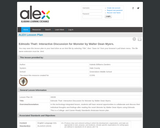
Students will have several opportunities to collaborate and discuss their individual thoughts and findings after reading the novel Monster by Walter Dean Myers using Edmodo.

Students will reserach various colleges of their choosing in order to best prepare for post-secondary endeavors. The research will be conducted using a handout with specific questions for students to answer about each college. Students will present findings in a Microsoft Publisher brochure.